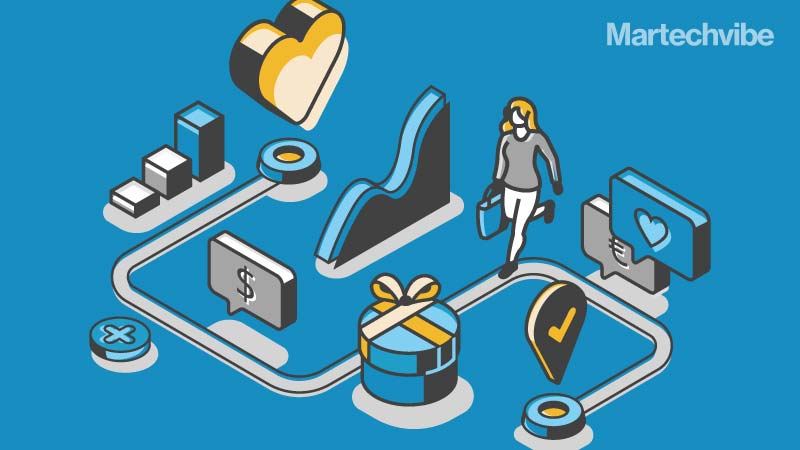Take The Stress Out Of Marketing, Map Your Customer Journey
The biggest challenge most marketers face isn’t attracting new customers and expanding the business. Or product innovation and the need to be on top of trends. It is customer retention. Digitisation has permeated every aspect of our lives, and marketers today are witnessing the rise of the “intelligent customer”. Before we look at how a […]
Topics

The biggest challenge most marketers face isn’t attracting new customers and expanding the business. Or product innovation and the need to be on top of trends. It is customer retention.
Digitisation has permeated every aspect of our lives, and marketers today are witnessing the rise of the “intelligent customer”. Before we look at how a marketing automation platform can improve customer experience, we need to understand the customer.
Customers today are tech-savvy, intelligent, and, most importantly, take essential decisions in seconds. Price and utility of products are not the reason why they do business with brands. The customer today demands a pleasant experience. And brands that deliver excellent customer experience during the sales process are more likely to be remembered. We need to talk about the customer journey here in detail, what it means in the digital sense, right from the first impression to research to signing up to making the first purchase to making repeat purchases, recommending to friends and family. There is a complete life-cycle involved, and marketers look at this in detail to help segment their users better, create better engagement loops that improve the ‘experience’. Today’s customer is essentially a hybrid shopper who’s too busy being present in different places at the same time. Navigating between physical, web and mobile stores. Customers are busy engaging with the world through mobile devices, and their journey begins through these. Suppose marketers study the information from these interactions. This provides unique data about the customers’ behaviour regarding multiple devices being used by the same customer or multi-screen behaviour etc.
Also Read: The Importance of Customer Experience In 2021
First Impression and CX go a long way
Marketers need to go over and above their customers’ expectations to be able to identify their needs, understand what they want and what they expect.
A simple Google search or search for the product in Facebook or Instagram shops prepares the customer for the shopping, and this is where an engaging post or an attractive product display can bring the customer into your sales channel.
Modern consumers have several expectations from brands – they demand personalised experiences, an engagement that serves them more quantified value (better offers, better prices). All of this needs to be highly contextual, and of course, tailored to individual needs – sounds challenging, but the top consumer brands have cracked this to a large extent giving rise to the ‘personalisation’ trope. The real challenge is to consolidate all of this information into actionable use-cases in real life that translate into dollar value impact, repeat purchases and the creation of evangelists.
To anticipate your customers’ needs, marketers need to collect data from authorised sources, analyse the data. Customers are always communicating. Marketers have channels in place to record and understand everything the customer is telling by way of signals.
Social listening, data analysis and pattern recognition are helpful in creating better experiences. Predictive analytics is a rising trend that is dominating marketing strategies in several brands to create ‘conversion loops’ via engagement. Sending the right message to the right person at the right time translates into more value, higher chances of conversions. Doing this at scale consistently, is the real challenge. This is where ‘signals’ come into play as they provide a guiding light.
A good CDP helps marketers unify their data under one umbrella and helps manage the enterprise. With proper analytics, marketers can access all customer data and offer a suitable product or solution in no time. CDPs help marketers follow up on leads and opportunities at the right time.
Also Read: Extended Reality: Enhancing Customer Experiences
Organise your campaign
Having organised your data, it’s time to focus on your campaign now. An ideal campaign manager allows you to create intelligent user engagement strategies, streamline and use real-time insights to personalise communication. An important part of the customer journey is communication.
A dynamic lifecycle campaign is very important for catering to customers across different stages of the brand journey.
This ensures that the engagement that happens from the brand side takes into account the current journey stage of each customer (new user, repeat buyer, dormant user, etc.).
Here, the CDP is key to help assimilate data and create a unified view of users. This helps marketers segment better, understand what customers are looking for, what they are buying, where they are jumping off, etc.
Then, a versatile campaign manager ensures that complex lifecycle marketing campaigns can be created and executed, fully automated, via triggers to ensure context and enhance value. (Trigger example – when a user signs up to your website/app, when a user makes a purchase when the user doesn’t buy in 15 days, etc.).
To create campaigns that resonate with customers. personalisation becomes key. Marketers need to leverage personal + behavioural information in campaigns to create connections with the customers because context creates magical moments that enhance the experience for users, no matter where they are in their brand lifecycle.
Ensuring that message is pertinent to the customer, has personalisation cues (info. based on their last made purchase, for example, or fav. brand, or birthday) improves the chance of conversions as well.
Now, put this into the perspective of an average customer lifecycle. Mapping this out will reveal several stages. Marketers need to create engagement campaigns that take care of these ‘lifecycle moments’ and ensure that segmentation and customer lifecycle mapping is done right, and create impactful marketing campaigns accordingly.
————————————————————–
This article is sponsored by WebEngage. A full-stack marketing automation suite that drives growth for consumer businesses by enabling them to engage users via multiple channels like Push, In-app, SMS, On-site Notifications, Web Push, Email, Facebook-Instagram, and WhatsApp. The platform’s analytical capabilities also make it possible for businesses to get a 360° view of their users, product, campaigns and compare the impact of each channel of engagement.









































































































